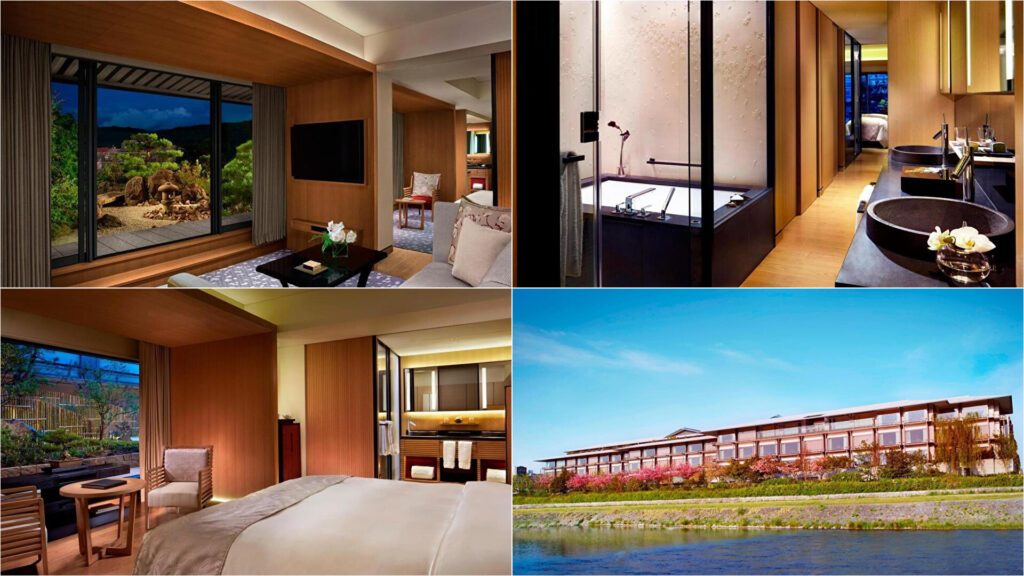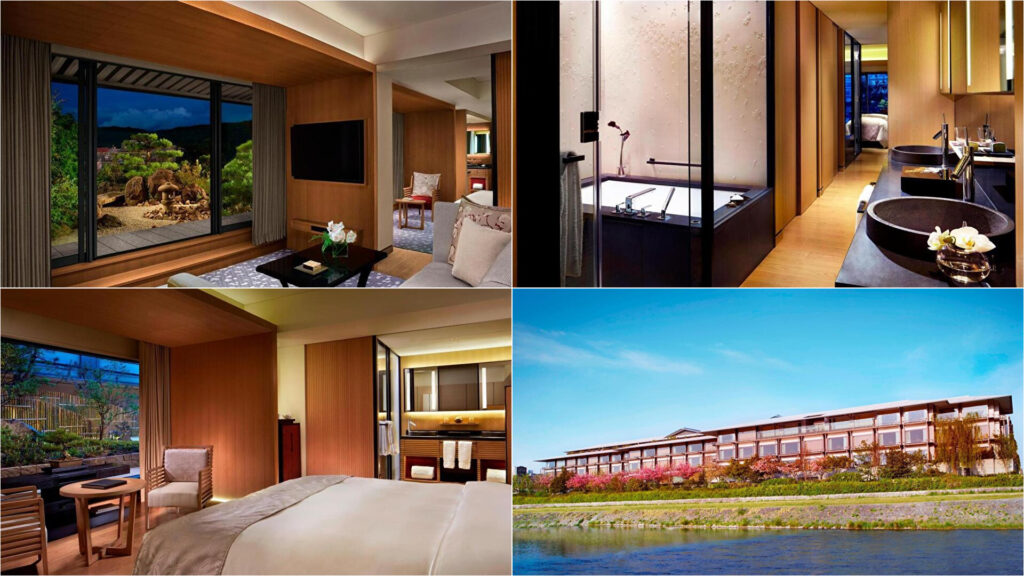Overview
Few places in the world blend ancient rituals with trailblazing modernity quite like Japan. Tea ceremonies, tatami mats, monks, Samurai and time-honoured geisha traditions co-exist with an infectious pop culture, minimalistic smart homes, eclectic nightlife and glittering skyscrapers. From Shinto Shrines and Buddhist temples to space-age technology and cutting-edge art galleries, there is something to captivate every traveller. Add in the natural beauty of Mt Fuji, poignant Hiroshima and Osaka’s vibrant culinary scene and you have a destination that is simply enthralling.
Journey Highlights
- Go behind the ring of Japan’s national sport in a leading Tokyo sumo stable
- Admire venerated Shinto shrines, Zen temples and perfectly manicured gardens
- Take part in a traditional taiko drumming class
- Appreciate Japan’s rich culinary heritage with authentic kaiseki dining, street food staples, ocean-fresh sushi and traditional sweet treats
- Ride like a local on high-speed bullet trains and rickshaws
- Pay your respects at Hiroshima’s Peace Memorial Park
Itinerary
Day 1: Arrive Tokyo

Arrive into Tokyo and enjoy private transfer to your hotel.

Palace Hotel
Day 2: Tokyo

Start your journey with a stroll in the beautiful Edo period garden, Hamarikyu, one of the most visited in the city thanks to its year-round botanical attractions. Pause to admire the surrounds over green tea at the Nakajima-no-Ochaya tea house. Next, visit Asakusa Kannon Temple, one of the city’s most venerated temple sites dedicated to the Bodhisattva, Guan Yin, which has its origins in Hindu belief from India. The restaurants around Asakusa are some of the best for traditional Japanese cuisine, including the ever-popular tempura. You might ask your guide to recommend the best place for lunch, or perhaps learn to make sushi with an expert chef before feasting on your creations (additional cost).
This afternoon, wander through the Tokyo National Museum, which features one of the largest collections of art and archaeological artifacts in the country, made up of over 100,000 individual items and nearly a hundred national treasures. Finish your day with a visit to Meiji Shrine, a sanctuary for Shinto followers and a popular venue for traditional Japanese weddings. You may choose to take part in a solemn Shinto ceremony, full of ritual and offerings — for an immersive cultural experience (additional cost). The rest of the day is yours to discover this vibrant city at leisure.

Palace Hotel
Day 3: Tokyo

Enjoy an up-close ‘behind the ring’ encounter at one of Tokyo’s best sumo stables for an appreciation of Japan’s national sport. Housing anywhere between two and forty young men a time, these living and training quarters demand absolute loyalty and discipline from the wrestlers, with daily training commencing at dawn.
Your cultural tour continues with a fascinating taiko drum experience. Taiko is a recent tradition of Japanese drum playing, which has its roots in ancient Japanese religious ceremonies and folk music. Join the owner of a local music shop, and take part in a class to learn about its history and technique before putting your new skills to practise. (additional cost).
Enjoy this afternoon at leisure or explore the city at your own pace.

Palace Hotel
Day 4: Tokyo – Hakone

Leave the bustle of Tokyo behind and head for Mount Fuji — Japan’s highest and most prominent mountain. If you’re feeling energetic hike up to admire the views (weather permitting). Alternatively, visit the Fujisan World Heritage Centre for an introduction to the area and its famous peak.
Next travel to Hakone, among Japan’s most popular hot-spring destinations, and view the forested slopes of Hakone National Park, an area encompassing coastlines, mountains, lakes and more than 1,000 volcanic islands. Stroll the grassy hillsides of Hakone’s Open Air Museum, and admire the impressive contemporary sculptures and artwork on display, including masterpieces by Henry Moore and Rodin. The museum also features one of the world’s finest Picasso exhibits, presenting some 300 works by the cubist master.

Hyatt Regency Hakone Resort and Spa
Day 5: Hakone

Head into the great outdoors admiring stunning views of Mt Fuji and choose from a number of activities. Take a ropeway ride up to the summit of Mt Komagatake, for incredible views of Fuji, the Pacific Ocean and on a clear day, even Tokyo. Cruising on Lake Achi is a stunning option. Lake Achi was formed in the caldera of Mount Hakone after the volcano’s last eruption 3000 years ago. Take a scenic cruise on the mirrored waters of the lake for serene views of the surrounding landscape. For those who are after classic Japanese rejuvenation, head to the Owakudani crater and volcanic hot water springs, where you can relax while you look out at the iconic mountain, and if you’re looking for a hit of art it’s a must-visit to the Okada Museum of Art.

Hyatt Regency Hakone Resort and Spa
Day 6: Hakone – Kyoto

Board a private jet and helicopter for a flight to Kyoto, Japan’s famous cultural center, overlooking the majestic Mount Fuji below. Japan’s famed cultural capital. With 2000 odd temples and shrines, Kyoto is an architectural marvel, where prayer chants can be heard down old street scapes, monks shuffle through quaint Zen gardens and the smell of incense is never far away. All this and more exists alongside a modern city with all the chic of Tokyo. Settle into your luxury hotel, before enjoying an afternoon at leisure. This evening, perhaps venture into one of Kyoto’s many culinary hotspots for Michelin-starred delights.

Ritz-Carlton Kyoto
Day 7: Kyoto

Set out for a full day exploring Japan’s cultural capital. Begin at the ornamental Nijo Castle, one of the finest examples of feudal era Momoyama architecture. Beyond its massive stone walls and sprawling palace grounds, thick with cherry trees, stands the castle’s centrepiece: the ornately embellished Ninomaru Palace. Next it’s on to the Golden Pavilion, one of Kyoto’s most famous temples with its gold leaf adornment. The temple was originally the retirement villa of the shogun Ashikaga Yoshimitsu, and upon his death in 1408 it became a Zen temple.
This afternoon, travel to Arashiyama and stroll through the impressive bamboo grove, one of Kyoto’s top sights. Wandering along the path between the soaring stands of bamboo is an ethereal experience. The bamboo is still used in local workshops to produce baskets, cups, boxes, mats and pieces of art.
Later today, ride like a local on a rickshaw admiring the surrounding scenery from a different perspective (additional cost), before stopping at the Tenryuji Temple, one of Kyoto’s many UNESCO World Heritage sites. The head temple of the Tenryu sect of Rinzai Zen Buddhism, this is the largest and most frequented temple in Arashiyama.

Ritz-Carlton Kyoto
Day 8: Kyoto

Set out on a leisurely walk along the cherry-lined Philosopher’s Path admiring the ever-changing vistas, the temples and shrines along the way and pausing for a refreshment at one of the cafés along the trail. Next you’ll experience the ancient Japanese ritual of the tea ceremony. Take part in a traditional ceremony in a nearby temple or be welcomed into the home of a maiko (apprentice geisha) who will lead the tea ceremony and explain the importance of this age-old custom.
Finish the morning at Gion, Kyoto’s most famous geisha district, located around Shijo Avenue between Yasaka Shrine in the east and the Kamo River in the west. Discover an area brimming with shops, restaurants and ochaya (teahouses), where geiko (Kyoto dialect for geisha) and maiko entertain.
The afternoon is at leisure before taking your seat for an unforgettable meal in the company of a maiko, or geisha. Treat your tastebuds to a kaiseki ryori (multi-course) dinner and sip sake as you learn more about your hosts’ world. Then, enjoy traditional maiko dance and musical entertainment (additional cost).

Ritz-Carlton Kyoto
Day 9: Kyoto – Nara – Osaka

Today you are driven to Osaka via Fushimi Inari and Nara. Fushimi Inari is the most important of several thousands of shrines dedicated to Inari, the Shinto god of rice. On your arrival at the main hall, you may wish to present a small offering to the resident deity, before making your way to the rear of the shrine to find the first of over 5,000 vermilion torii gates.
Fushimi is Kyoto’s sake district. Stroll around the delightful tree-lined canals, past historic sites and among beautiful wooden brewery buildings. During a sake tasting learn about the process and how brewers balance the main ingredients of water, rice, malt and yeast, and how the taste of sake changes according to the ingredients.
Your next stop is the expansive estate, Nara Park, which is home to over 1,000 free-roaming deer, considered in Shintoism as messengers of the gods. After lunch (additional cost), head to Todaiji, a temple founded in 752 and home to Daibutsu, or Great Buddha, the world’s largest bronze casting. Marvel at the size of the Buddha’s open hand, which alone is the height of a person. This is believed to be the largest wooden structure on earth.
Return to Shintoism at Kasuga Taisha, a shrine built in 768 and reconstructed every 20 years thereafter. Envisage the 3,000 stone and bronze lanterns lit for festivals in February and August each year.
Finish the day in Osaka, arriving early evening, with dinner at your leisure.

Ritz-Carlton Osaka
Day 10: Hiroshima

In the morning you will be transferred to the airport to board your private jet to Hiroshima. A visit to Hiroshima is a reminder of the catastrophic moment in 1945 when the city was hit by the world’s first atomic bomb. A poignant visit to Peace Memorial Park is a chance to pay respects and discover more about this tragic event. Wander around the Atom Bomb Dome, the only structure left standing after the blast, and explore the old wing of the Peace Memorial Museum.
Afterwards travel to the southwest edge of the city and board a ferry to the island of Miyajima where you visit the Itsukushima Shrine. The red torii gate, one of the most photographed sites in Japan, is located 150 metres from the shore at the entrance to the cove in which the Itsukushima Shrine stands. An optional sea kayaking excursion gets you close up to the shrine and its famous torii gate (additional cost).
Take a ferry back to the mainland and then head to the airport to board private jet back to Osaka.

Ritz-Carlton Osaka
Day 11: Osaka

Enjoy a morning at leisure before joining your specialist foodie guide to discover the gastronomic highlights of the city. Wander through the colourful Shinsekai district to enjoy kushikatsu, deep fried morsels of meat and vegetables, and wash it down with a cold beer. Venture into the covered Kuromon Ichiba Market, also known as ‘Osaka’s Kitchen’, where more than 150 shops sell fresh fish, meat and produce, traditional sweets, clothes and homewares. Sample some grilled sea food or yakitori, sea urchin or takoyaki — a street food staple.
Finish up in Dotonbori, the city’s official entertainment district, where food is the main attraction and hundreds of eateries line the main thoroughfare and streets. Be sure to try local titbits like okonomiyaki (tasty savoury pancakes), kitsune udon (delicious noodle soup), ramen and teppanyaki treats.

Ritz-Carlton Osaka
Day 12: Depart Osaka
Transfer to Osaka Airport where your journey ends.
Contact us:info@celebrityworld.jp
